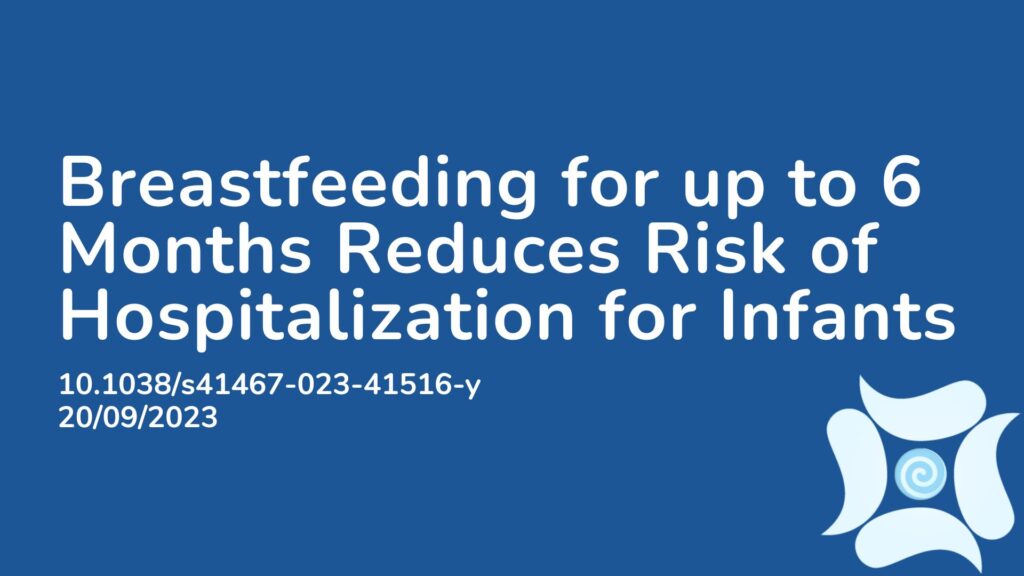Summary:
The World Health Organization and UNICEF recommend breastfeeding within the first hour of birth up to 6 months of age. While breastfeeding recommendations have evolved in low and middle income countries, the importance of promoting it in high income countries remains debated. Breastfeeding benefits mothers by reducing the risks of breast cancer, diabetes, and ovarian cancer, as well as lowering infectious disease rates and improving offspring health. Studies also suggest higher vaccine antibody responses in breastfed infants and a reduced risk of eczema due to omega-3 fatty acids in breast milk. However, its impact on offspring hospitalization rates is unclear. This study, following 1,608,540 children for an average of 8.5 years, found that exclusively breastfed infants had a 15% lower hospital admission rate compared to formula-fed infants. This evidence supports the value of breastfeeding for at least the first 6 months of an infant’s life in enhancing their health.
Abstract:
Benefits of breastfeeding for both the mother and the child are well established, but a comprehensive and robust study to investigate the protective effect of breastfeeding and attenuated time effect stratified by cause of morbidity are lacking. This study is based on the nationwide birth cohort in Korea that includes data on all infants born from 2009 to 2015. Of 1,608,540 children, the median follow-up period was 8.41 years (interquartile range, 6.76-10.06). When compared to children with fully formula feeding, the hospital admission rate was 12% lower in those with partially breastfeeding and 15% lower in those with exclusive breastfeeding. The apparent protective effect of breastfeeding was reduced with increasing age. Our study provides potential evidence of the beneficial association of breastfeeding on subsequent hospital admissions. The protective effect declined over time as the children grew older. Encouraging any breastfeeding for at least the first 6 months among infants is an important public health strategy to improve overall child health.
Article Publication Date: 20/09/2023
DOI: 10.1038/s41467-023-41516-y



